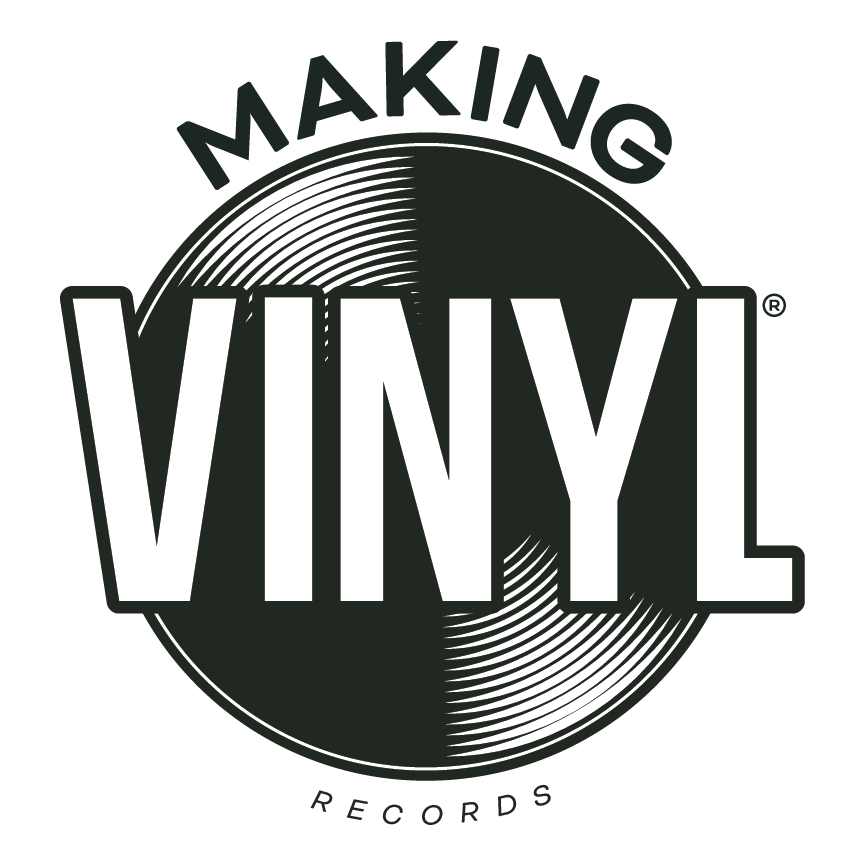What is a Vinyl Record?
Vinyl records are flat discs made from polyvinyl chloride (PVC), a type of plastic known for its durability. Unlike early records made of shellac or wax, modern vinyl records use this material for its strength and sound quality. These records are engraved with grooves that store sound waves, allowing music to be reproduced when played with a stylus (needle). Vinyl’s evolution from early materials to modern PVC has made it the preferred format for music lovers today.
The Process of Making a Vinyl Record
Creating a vinyl record is a multi-step process, starting with mastering, where sound is captured and fine-tuned for physical reproduction. Once the master audio is perfected, it’s transferred onto a lacquer disc, a smooth plate that will be used to create the final record. A cutting lathe then etches the soundwaves into the lacquer, forming the grooves.
Next, the lacquer disc undergoes electroplating, which creates a metal stamper. This stamper is used to press melted vinyl “pucks” into final records, imprinting the grooves onto the disc’s surface. Modern pressing machines make this process faster, but the core method has remained consistent over the decades.
The Science Behind Vinyl Records
Vinyl records store sound in their grooves. When a record spins, the stylus travels along these grooves, vibrating according to the pattern etched into them. These vibrations are converted into an electrical signal that’s amplified and turned back into sound through speakers. What makes vinyl special is its analog format, which many believe provides a richer, warmer sound compared to digital audio formats.
The Role of the Pressing Process
Pressing is where the magic happens—turning raw vinyl into a playable record. A PVC puck, heated to a malleable state, is placed between two metal stampers, which are pressed together with significant force—often hundreds of pounds of pressure. This imprints the grooves from the stamper onto the puck, forming a playable disc.
Vinyl production isn’t quick: depending on the size of the order, it can take weeks to press a batch of records. Complex factors like custom designs or special colors can slow down the process, but for standard production, pressing a vinyl record can take as little as 30 seconds per disc.
Environmental Concerns: Are Vinyl Records Sustainable?
Vinyl records, made from PVC, do raise environmental concerns. The production process involves chemicals and energy use, and PVC isn’t biodegradable. However, the vinyl industry is exploring ways to reduce its impact, such as recycling PVC and using more sustainable packaging options. Although vinyl isn’t the greenest music format, its durability means that records often last decades, reducing the need for replacements.
Costs and Custom Vinyl Production
Pressing vinyl records isn’t cheap. Costs depend on factors like quantity, packaging, and whether custom options—such as colored vinyl or unique artwork—are involved. On average, a small pressing of 100-200 records can range from $1,500 to $3,000, but larger orders reduce the cost per unit. While home pressing machines do exist, they don’t match the quality of commercial presses, making DIY vinyl a niche hobby at best.
Vintage Vinyl Records: Then and Now
Originally, records were made from shellac or wax and were far more fragile than today’s vinyl. The shift to PVC in the mid-20th century revolutionized the music industry, offering longer-lasting records with better sound quality. Though the process has become more automated, vinyl records are still made using many of the same basic techniques as their predecessors, keeping the tradition alive.
Collectability and Value of Vinyl Records
Vinyl records have become collectibles, with value based on factors like rarity, condition, and demand. Limited editions, colored vinyl, and custom pressings often command higher prices. As vinyl’s popularity grows, even modern records can hold significant value, making them a good investment for music lovers.
—
Vinyl records are as much a work of art as they are a music format. From mastering to pressing, every step in the process reflects a blend of craftsmanship and technology, making each record a unique piece of music history.


